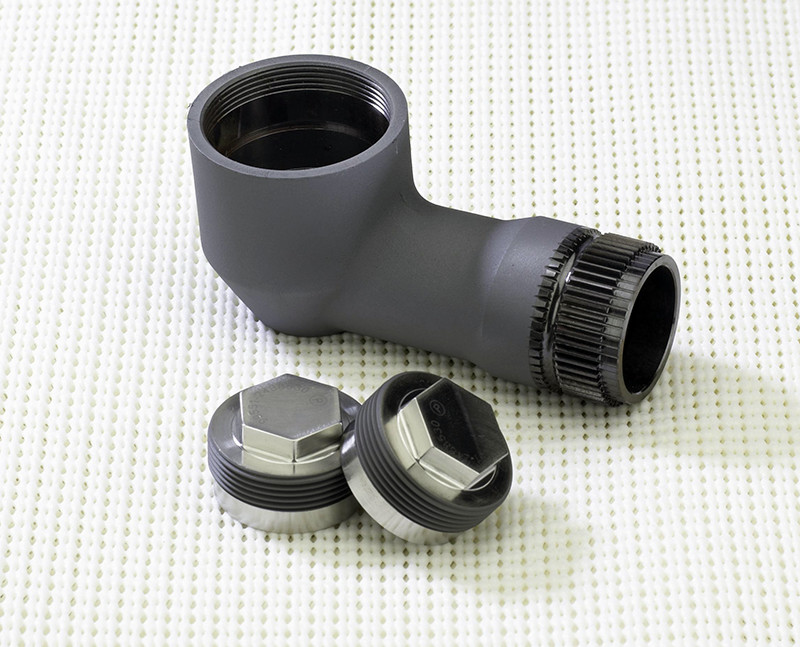
Automotive Dry Film Lubricants Market: Introduction
- Dry film lubricants reduce friction between two sliding surfaces while functioning at high operating pressure and temperature without the need for oils and greases. These lubricants offer long-lasting lubrication, protection from corrosion, and resistance to wear & tear. Dry film lubricants can operate at temperatures of up 350 0C in oxidizing environments and up to 1100 0C in non-oxidizing environments. These lubricants are made from materials such as Polytetrafluoroethylene (PTFE), boron nitride, graphite, molybdenum disulfide (MoS2), and tungsten disulfide. Molybdenum disulfide (MoS2) is commonly used to make dry film lubricants.
Key Drivers of Automotive Dry Film Lubricants Market
- Developments in the automotive industry are aimed at reducing friction and improving efficiency of various components such as joints, gears, and linkages in vehicles, which in turn is anticipated to propel the automotive dry film lubricants market. For instance, molybdenum disulfide can offer a low coefficient of friction of up to 0.05, and it is thermally stable in an oxidizing environment. Therefore, Molybdenum-di-Sulfide (MoS2) is ideal for high-pressure applications such as hydraulics, gears, fasteners, acme screws, threaded joints, and anchor bolts. Furthermore, MoS2 is often utilized in various automobile systems such as constant-velocity joint, steering linkage, wheel bearing, pedal shafts, ball joints, and control arms.
- Dry film lubricants are extensively employed in automobile and manufacturing industries. For instance, graphite-based dry film lubricants are used in ball bearings, railway track joints, brass instrument valves, gearboxes, transmission components, etc.
- Government subsidies and policies in various countries across the world have propelled industrial growth, which in turn is expected to propel the automotive dry film lubricant market. For instance, major manufacturers have started establishing production bases in India, led by initiatives such as ‘Make in India’ by the Government of India. This has resulted in rapid industrialization, thereby boosting the demand for dry film lubricants in various heavy industries and the automobile sector. However, regulations imposed on perfluorooctanoic acid and perfluorooctane sulfonate, which are used in emulsion polymerization of polytetrafluoroethylene, are estimated to hamper the automotive dry film lubricants market.
- Disruptions in supply chain catering to the automobile industry, owing to shutdown of production and manufacturing facilities and raw material shortage caused by the coronavirus pandemic across the world, is estimated to contract the market in 2024. Consequently, the coronavirus pandemic has hampered the global automotive dry film lubricants market. The market is anticipated to recover by increasing production volume of vehicle components as well as vehicle production in 2024. This, in turn, is projected to offer lucrative opportunity to players operating in the supply chain of the automotive dry film lubricants market during the forecast period.
For Right Perspective & Competitive Insights on Automotive Dry Film Lubricants Market, Request for a Sample https://www.transparencymarketresearch.com/sample/sample.php?flag=S&rep_id=79062

Asia Pacific to dominate Automotive Dry Film Lubricants Market
- In terms of region, the global automotive dry film lubricants market can be segmented into North America, Europe, Latin America, Asia Pacific, and Middle East & Africa
- Demand for dry film lubricants is likely to increase significantly in Asia Pacific during the forecast period, owing to a rise in the demand for these lubricants in automobile and manufacturing industries in the region. India and China manufacture approximately 50% of passenger vehicles in the world. Consequently, these countries are major consumers of dry film lubricants used for automobiles globally.
- Major automakers including Kia, Daimler, Audi, Jeep, and Volvo have established manufacturing facilities or are planning to start new facilities in Asia Pacific. This, in turn, is expected to offer lucrative opportunity for the players engaged in the automotive dry films lubricant market.
Key Players Operating in Automotive Dry Film Lubricants Market
The global automotive dry film lubricants market is highly concentrated due to the presence of top manufacturers. A few key players operating in the automotive dry film lubricants market are:
- ASV Multichemie Pvt., Ltd
- BECHEM Lubrication Technology
- DOW Corning
- Endura Coatings
- GMM Coatings Pvt., Ltd.
- Harves Co., Ltd.
- OKS Specialty Lubricants LLC
- Poeton Industries Limited.
- The Chemours Company
- Vitracoat America Inc.
- Whitford Corporation
- Whitmore Manufacturing Company
Are you a start-up willing to make it big in the business? Grab an exclusive PDF Brochure of this report https://www.transparencymarketresearch.com/sample/sample.php?flag=B&rep_id=79062
Global Automotive Dry Film Lubricants Market: Research Scope
Global Automotive Dry Film Lubricants Market, by Vehicle Type
- Passenger Vehicles
- Light Commercial Vehicle
- Heavy Commercial Vehicle
Global Automotive Dry Film Lubricants Market, by Material
- Polytetrafluoroethylene (PTFE)
- Molybdenum disulfide (MoS2)
- Tungsten Disulfide
- Boron Nitride
- Graphite
- Others
Global Automotive Dry Film Lubricants Market, by End-use Industry
- Automobile
- Transportation
- Heavy Industries
- Marine
- Defense
- Others
This study by TMR is all-encompassing framework of the dynamics of the market. It mainly comprises critical assessment of consumers’ or customers’ journeys, current and emerging avenues, and strategic framework to enable CXOs take effective decisions.





